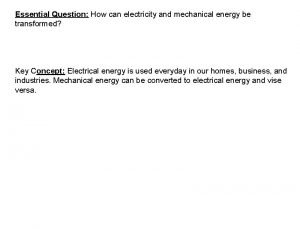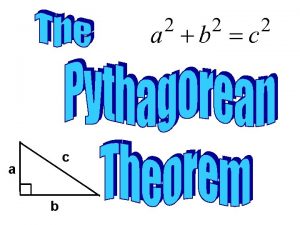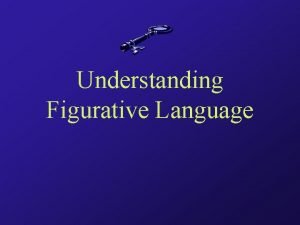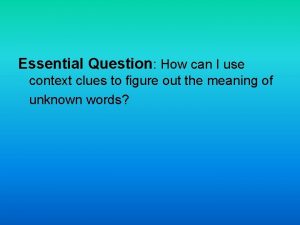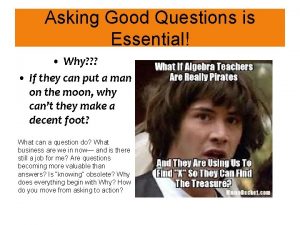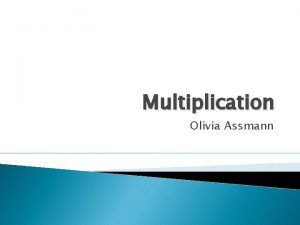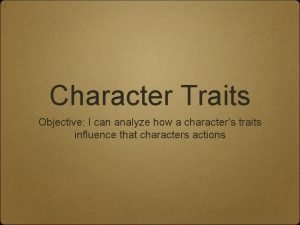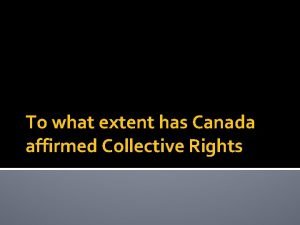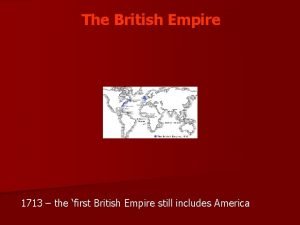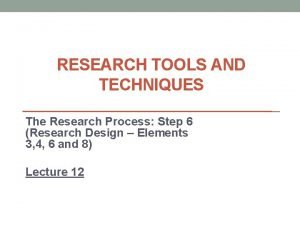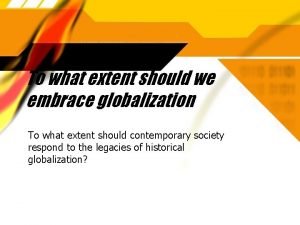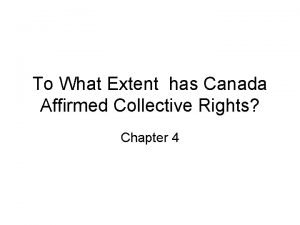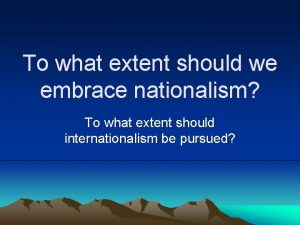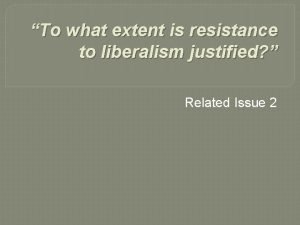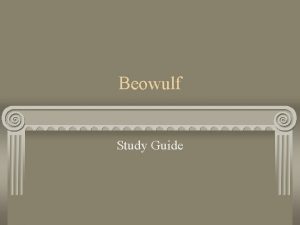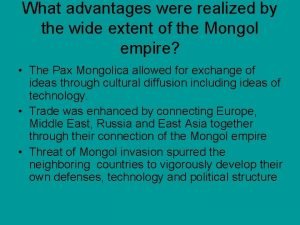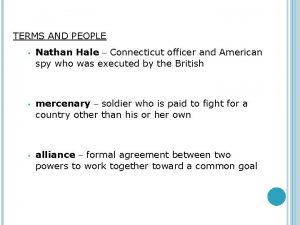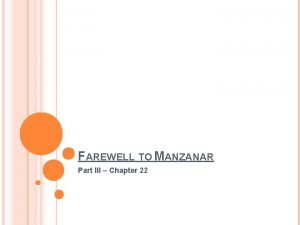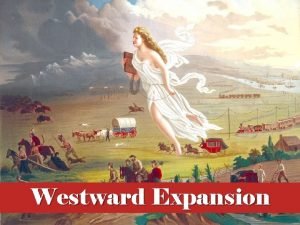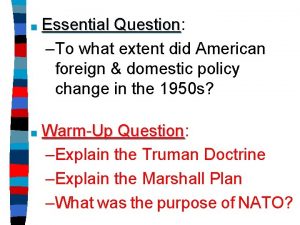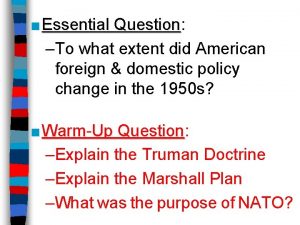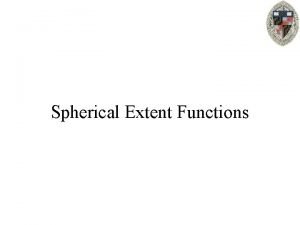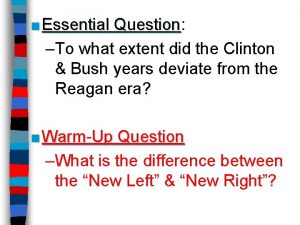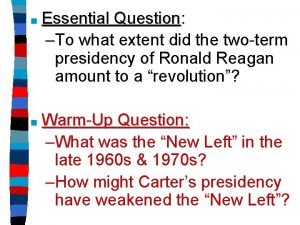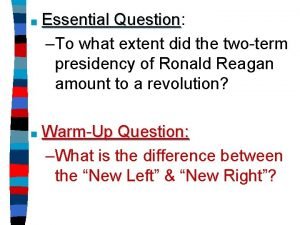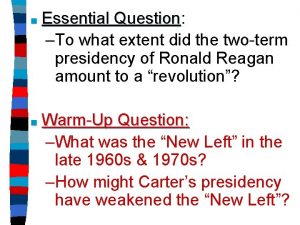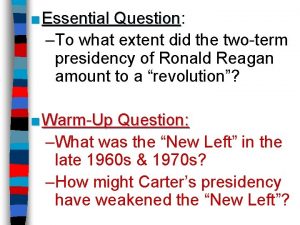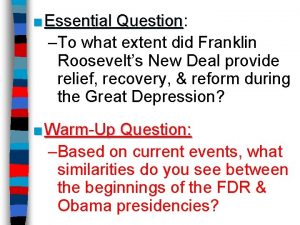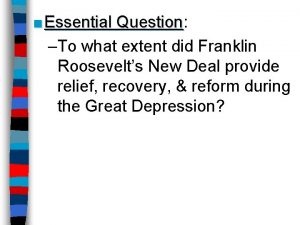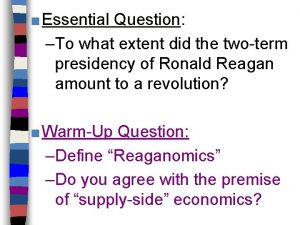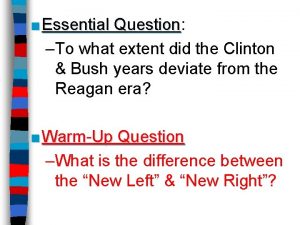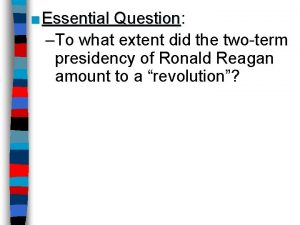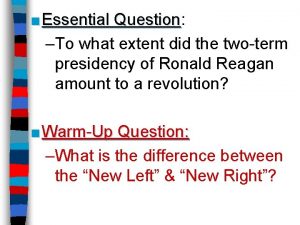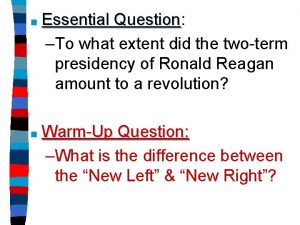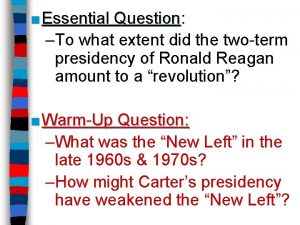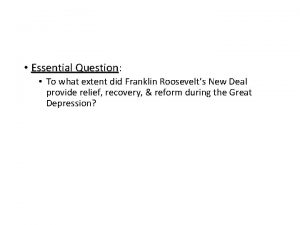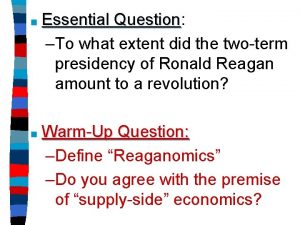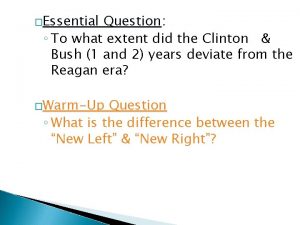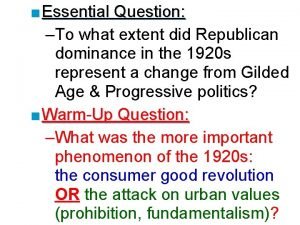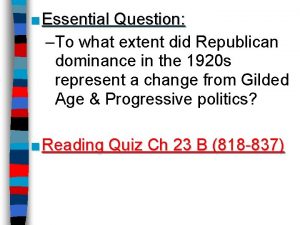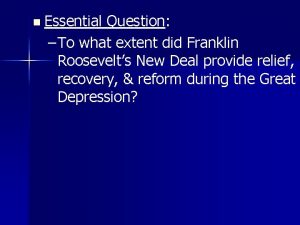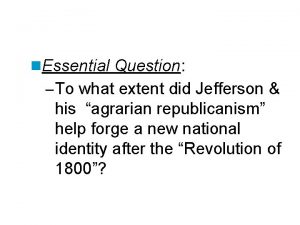Essential Question Question To what extent did American





















































- Slides: 53

■ Essential Question: Question –To what extent did American foreign & domestic policy change in the 1950 s? ■ Warm-Up Question: Question –Explain the Truman Doctrine –Explain the Marshall Plan –What was the purpose of NATO?

Recap of Post War Economics ■ 1946 -1947: inflation with decline in GNP – Led to labor strike; Then, Congress passed Taft-Hartley Act (anti-labor) – Unionization of South and women was not successful. Membership peaked in 1950 s and then began steady decline ■ Democratic admin: sold war factories to private companies cheaply ■ Congress passed Employment Act of 1946 and created Council of Economic Advisors

Recap of Post War Economics ■ 1948: GNP began to climb ■ 1950 s: National income doubled and then doubled again by 1960 s ■ Affluence affected most Americas ■ Middle class more than doubled to 60% ■ Women benefited: though culture glorified traditional role of women, they accounted for more than a quarter of workforce at end of war.

President Eisenhower’s Modern Republicanism Eisenhower Video

Communism Gov’t Eisenhower’s Modern Republicanism Corruption Korean War ■ Frustration with the stalemate in Korea & the Red Scare led to a Republican presidential takeover in the 1952 ■ WW 2 hero Dwight Eisenhower provided an antidote for “K 1 C 2” – Since Ike was liked by everyone, VP Richard Nixon did the heavy campaigning attacked communism & corruption – Eisenhower vowed to go to Korea & personally Once elected, Ikeend didthe gowar to Korea, overturned the U. N. battle plan, & threatened China with nuclear war to get an armistice signed in 1953

Eisenhower’s Modern Republicanism ■ Eisenhower labeled his politics “Modern “I’m conservative when it comes to money Republicanism” or “dynamic conservatism”: and liberal when it comes to human beings” – “Ike” believed in conservative gov’t spending & a balanced budget but he had no desire to end New Deal programs middle of the road tactic – Wanted to avoid creeping socialism • Decreasing military spending, transfering control of oil fields to the states, curb TVA by setting up a private company – The affluent, postwar “good life” at home was dependent upon a strong Cold War foreign policy

During the Eisenhower era, the U. S. economy Eisenhower’s Modern Republicanism avoided spiraling inflation & brought middle■ In hisprosperity 8 yearstoasmore president, Ike class Americans had a modest domestic record: Enacted “Operation Wetback” –Instead of ending New Deal programs, Eisenhower added to social security & minimum wage Tried to terminate Native American –Usedtribes FDR’s Federal Housing as legal entities. Admin to help finance building & purchasing of suburban homes –Created the Depts of Health, Education, & Welfare

Eisenhower’s Modern Republicanism ■ Interstate Highway System: System –Highway Act of 1956 created 42, 000 miles of divided highway to connect major U. S. cities –These highways helped promote national defense, interstate trade, & vacation travel –All funds were raised exclusively through gas, tire, & car taxes

The Republicans in Power “Have you no decency, Mc. Carthy? ” ■Mr. Regarding Mc. Carthyism, Ike provided Mc. Carthy “just enough rope to hang himself” in 1954 – After ruining lives of many officials, writers, and actors, he also denounced General “I am not. Hegoing get into a George Marshall. finallytowent too far [peeing] contest with a skunk” when he attacked the Army – In the televised “Army hearings, ” the nation saw Mc. Carthy’s style & fact-less attacks – The Senate censured Mc. Carthy & his “communist” attacks quickly died… as did he of alcoholism 3 years later

Postwar American Society

An Affluent Society ■ The postwar boom was caused by – Increased production from WW 2 – Cheap energy from low cost fuel and electrical grids – Increased productivity rising educational level of work force – Change in economic structure: shift of workforce out of agriculture

An Affluent Society The Marshall Plan ■ The postwar boom The was. Korean caused Warby –A desire for consumer goods in the 1930 s & 40 s) Hi-fi (suppressed record Theplayers American economy grew from crippling –Gov’t spending during. Refrigerators Cold War depression to the highest standard of living in all. Cars of world history in just 1 generation with –Baby boom & movement Filter to the automatic cigarettes TVs suburbs increased the demand transmissions for consumer goods Diner’s Club credit cards ■ But, this affluence led to. Movement a shift to Sunbelt from individualism to conformity

“I Love Lucy” TV in the “The Milton 1950 s Berle Show” TV replaced radio & magazines as the primary ■ $64, 000 Question conveyer of American consumer culture ■ 21 Questions TV ownership ■ Bonanza jumped from 9% in 1950 to 90% by 1960 ■ The Untouchables (45 million). Love attendance Lucy As■a. I result, in movies declined, advertisers using tv ads, televangelists ■ 1950 sbegan TV networks emerged, & people began viewing sports from home.

Birthrate, 1940 -1970 The late 1940 s & 1950 s experienced the “baby boom”

Life in the Suburbs ■ The rapid growth of suburbs altered American life: –“Blue” & “white collar” workers lived in the same neighborhoods –Suburbs depended upon cars, grocery stores, & shopping malls –Suburbs allowed for the nuclearfamily, not the extended family –“White-flight” to the suburbs left behind largely black urban cores

A Suburban Case Study: Levittown, New York Grew to 17, 000 sold homes in 1951 Begin in 1947 with 4, 000 rental homes to veterans

Southdale Shopping Center, Minnesota— the 1 st enclosed, air-conditioned shopping mall

Areas of Greatest Growth ■ The rapid growth of suburbs led to –Increased church membership; Religious preference became the primary identifying feature of the suburbs –Public schools grew & a college education was a goal for middle class children

Music changed in the 1950 s. “Doo-wop” music dominated the early 1950 s…

Music changed in the 1950 s. …but, was challenged in popularity by rock n’ roll. Rock n’ roll was inspired by black artists, but Elvis Presley made it popular among the youth.

The Music of the 1950 s ■ But, rock n’ roll quickly struck a chord with young listeners: –Black artists: Ray Charles, Chuck Berry, Fats Domino, & Little Richard –White artists: Jerry Lee Lewis, Roy Orbison, Buddy Holly, & Elvis Presley

Rock scared parents who thought the fast beats were immoral. This rock ‘n’ roll music is a SIN!

Teenagers were an important force in the 1950 s Suburban teens had leisure time & money to spend.

Teenagers were an important force in the 1950 s Businesses targeted teenagers, selling billions of dollars of “cool” consumer goods.

Hollywood movies targeted teens & made films about “juvenile delinquency. ”

TV, movies, & advertising in the 1950 s promoted conformity & stereotypes. The “ideal man” was provider & boss of the house.

TV, movies, & advertising in the 1950 s promoted conformity & stereotypes. The “ideal woman” was a housewife & mother.


The media promoted women as mothers & homemakers, but almost 40% of mothers had jobs. Betty Friedan’s The Feminine Mystique was a best-seller. She is the godmother of the feminist movement. It was “an indictment of the stifling boredom of suburban housewifery. ”

But, 1950 s stereotypes TV, movies, & advertising in were the 1950 s not accurate of most&Americans. promoted conformity stereotypes. Changing Sexual Behavior: Sexologist Alfred Kinsey Behavioral Rules revealed that premarital sex § Obey authority. & extramarital affairs were common in the 1950 s. of the 1950 s: § Control Your emotions. § Fit in with the crowd. § Don’t even think about sex!!! Playboy’s first publication, 1953

New Students Taking Advantage of the G. I. Bill

Critics of the Consumer Society ■ Some criticized suburban culture: – William Whyte’s Organized Man Gave rise to counter-culture & David Riesman’s Lonely reactionaries of 1960 s Crowd criticized American Inspired by Zen Buddhist state of conformity to social pressures inner grace called “beatitude” –Jack Kerouac & the Beats (Beatniks) Beatniks emerged as a new counter-culture by refusing to conform to 1950 s culture

The “beat movement” rejected conformity. “Beatniks” were artists & writers who lived non-conformist lives. They rejected the suburbs, consumerism, & “regular jobs. ” Led by Jack Kerouac, the beats inspired the “hippies” of the 1960 s.

Beat Artists (Beatniks) “City Lights” in San Francisco ■ Find imageswas a hotbed for Beat artists

Jackson Mark Rothko Pollock Abstract Expressionism Mar

■ Essential Question: Question –How do the domestic & foreign policies of Truman & Eisenhower compare?

Eisenhower Wages the Cold War

Eisenhower & the Cold War ■ Ike was unusually well-prepared to be a Cold War president ■ Ike’s foreign policy goals were to: –Take a strong stand against WW 2 military experience in Communism by. Excellent using “massive diplomat Europe & Asia retaliation” with nuclear weapons & politician Pragmatic & & covert CIA operations well organized Chose hard-liner John Foster to bespending Sec of State –To reduce Dulles defense & relax Cold War tensions

Massive Retaliation “Massive retaliation” meant targeting ■ Eisenhower wanted “more bang civilian targets rather than military ones for the buck”: –Nuclear weapons & long-range delivery missiles were cheaper Ike relied heavily on “brinksmanship” than conventional in which he used veiledarmed threats forces of war to accomplish strategy his goals –nuclear “Massive retaliation” made using nuclear weapons unlikely –But massive retaliation offered no intermediate course of action if diplomacy failed

Intercontinental Ballistic Missiles (ICBMs)

What are the stakes of war? Massive Retaliation? Mutual Assured Destruction?

Chinese Massive did not know. Retaliation if Ike was bluffing so backed off this territorial expansion ■ In. China 1954, Eisenhower used a hard -line approach to stop Chinese expansion in Asia: …and – the refusal of the USSR to aid China added a Chinese attempts to take over rift between Russia & China by the end of the 1950 s islands near Taiwan led Eisenhower to threaten nuclear war if China did not stop –Eisenhower hoped this pressure would drive a wedge between the USSR & communist China

Massive Retaliation ■ In 1956, Egyptian leader Nasser nationalized the start Suez Canal: we “If those fellows something, have to&hit. France ‘em—and, if necessary, –may England invaded Egypt with everything in the bucket” to take back the canal but the USSR opposed this intervention –Eisenhower did not want the USSR to attack so he threatened Russia with nuclear war –England, France, & the USSR left Egypt & the U. S. became the leader in Middle East

Eisenhower Doctrine Like the Monroe Doctrine in Latin America, ■ The Suez Crisis revealed thepower the United States emerged as a police vulnerability of the Middle in a new part of the world East to Communism & Ike responded: –In 1957, the Eisenhower Doctrine recommended U. S. armed force to protect the Middle East from Communist aggression –In 1957, Ike sent the military to Lebanon to halt Communism & install a pro-Western gov’t

Covert Actions ■ Ike’s administration used covert CIA acts to expand U. S. control: “The the end justifies the means” –In 1953, CIA overthrew Mohammed Mossadegh in Iran in favor of a U. S. -friendly shah –Ininterventions 1954, the led CIAtooverthrew a These anti-American leftist Guatemala hostilities in theregime Middle in East & Latin America –In 1959, the CIA took a hard-line against new Cuban dictator Fidel Castro after his coup

■ Essential Question: Question –How do the domestic & foreign policies of Truman & Eisenhower administrations compare? ■ Warm-Up Question: –Why do you think the USA and Soviet Union were so concerned about their space programs?

The Effects of Sputnik ■ The “space race” intensified the Cold War between USA & USSR – In 1957, the launch of the Soviet satellite Sputnik led to fears that the USSR was leading the race to create intercontinental ballistic missiles (ICBMs) creating a missile gap Khrushchev used Sputnik to put the U. S. on – The U. S. sped“We up it will plansbury to build the defensive: you. ICBMs Your & grandchildren will live under Communism. ” IRBM submarines

The Effects of Sputnik ■ Sputnik led to fears that America was growing soft & was losing its competitive edge & work ethic The advanced placement (AP) program ■ The U. S. gov’t responded with: is a byproduct of the NDEA! – National Aeronautics & Space Administration in 1958 –National Defense Education Act was created to promote math, science, & technology education

Sputnik inwas 1957 Alan Shepard the The Original Seven—Mercury Astronauts st 1 American in space

Waging Peace ■ Ike tried to end the nuclear arms race as both sides tested hydrogen bombs & ICBMs –In 1953, Eisenhower called for disarmament & presented his “Atoms for Peace” plan to the United Nations –In 1955, Khrushchev rejected Eisenhower’s “open skies” plan for weapons disarmament

Military-Industrial Complex This military-industrial complex in is part of the ■ In his farewell address 1960, reason for the Soviet demise in the late 1980 s Eisenhower warned against the & end of the Cold War in 1991 Military-Industrial Complex: Complex –The massive military spending that dominate domestic & foreign politics

Conclusions: Conclusions Restoring National Confidence

Conclusions ■ By 1960, the American people were more optimistic than in 1950 –Americans were no longer afraid of a return of another Great Depression –Anxiety over the Cold War continued but was not as severe –But, American values & race relations were areas of concern
 Characteristics of lipids
Characteristics of lipids Costa's level of thinking
Costa's level of thinking Questions about figurative language
Questions about figurative language Formula hipotenusa triangle rectangle
Formula hipotenusa triangle rectangle Essential question generator
Essential question generator Pythagorean theorem essential questions
Pythagorean theorem essential questions Essential questions for figurative language
Essential questions for figurative language Individual vs. society
Individual vs. society Context clues of essential
Context clues of essential What is the essential question in cornell notes
What is the essential question in cornell notes Open ended questions examples
Open ended questions examples Essential questions for multiplication
Essential questions for multiplication Essential question gif
Essential question gif Objective traits
Objective traits Cornell way
Cornell way Poetry essential questions
Poetry essential questions To what extent has canada affirmed collective rights?
To what extent has canada affirmed collective rights? When did the british empire end
When did the british empire end Contrived study setting example
Contrived study setting example Table of extent 0
Table of extent 0 The nature and extent of delinquency chapter 2
The nature and extent of delinquency chapter 2 Extent
Extent To what extent should we embrace globalization
To what extent should we embrace globalization To what extent should internationalism be pursued
To what extent should internationalism be pursued To what extent has canada affirmed collective rights
To what extent has canada affirmed collective rights To what extent should nation be the foundation of identity?
To what extent should nation be the foundation of identity? How to answer to what extent questions apush
How to answer to what extent questions apush To what extent should we embrace nationalism
To what extent should we embrace nationalism To what extent is resistance to liberalism justified
To what extent is resistance to liberalism justified Which bird can rotate its neck backwards to a large extent
Which bird can rotate its neck backwards to a large extent Beowulf monster grendel
Beowulf monster grendel Extent of researcher interference
Extent of researcher interference How do neurotransmitters influence behavior
How do neurotransmitters influence behavior To what extent adverbs
To what extent adverbs Wide extent
Wide extent Extent management local
Extent management local Medea analyse
Medea analyse Glycogen is found to only a limited extent in
Glycogen is found to only a limited extent in How could the french revolution have been avoided
How could the french revolution have been avoided How did nathan hale become an american legend
How did nathan hale become an american legend Who was nicholas novikov? when did he write this telegram
Who was nicholas novikov? when did he write this telegram What family “firsts” did jeanne accomplish?
What family “firsts” did jeanne accomplish? A : were you at the beach last weekend? b : no, i
A : were you at the beach last weekend? b : no, i Went
Went Rewrite the sentences again
Rewrite the sentences again Questions without question words
Questions without question words Nudging probe questions
Nudging probe questions Contoh open ended question
Contoh open ended question Factor isolating questions in research example
Factor isolating questions in research example Change the direct questions into indirect questions
Change the direct questions into indirect questions Compelling question vs supporting question
Compelling question vs supporting question Compelling and supporting questions examples
Compelling and supporting questions examples Facts about westward expansion
Facts about westward expansion Essential clothing ltd
Essential clothing ltd




